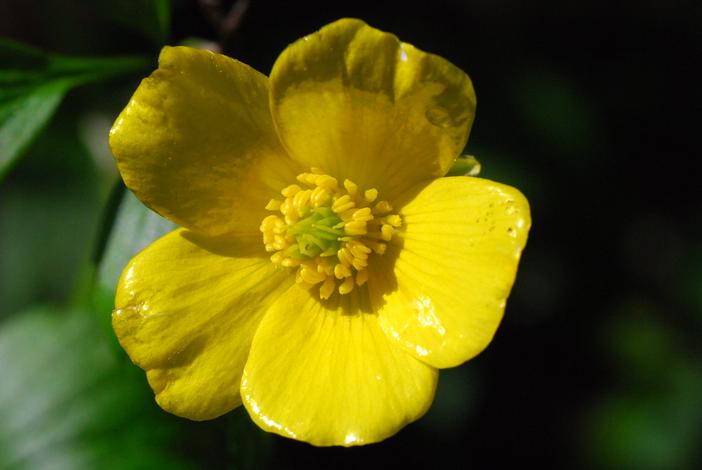Bristly Buttercup
(Ranunculus hispidus)
Bristly Buttercup (Ranunculus hispidus)
/
/

Joshua Mayer
CC BY-SA 2.0
Image By:
Joshua Mayer
Recorded By:
Copyright:
CC BY-SA 2.0
Copyright Notice:
Photo by: Joshua Mayer | License Type: CC BY-SA 2.0 | License URL: https://creativecommons.org/licenses/by-sa/2.0/ | Uploader: wackybadger | Publisher: Flickr








































































Estimated Native Range
Summary
Ranunculus hispidus, commonly known as Bristly Buttercup, is a deciduous perennial herb native to a variety of habitats including moist meadows, floodplains, woodland borders, and wetlands in the Eastern United States. It typically grows to a height and width of 1-2 feet (0.3-0.6 meters). The plant features hairy stems and foliage, with the leaves being deeply lobed. Bristly Buttercup produces bright yellow, glossy flowers in the spring that are quite showy and attract pollinators. The flowers are followed by beaked achenes that can be spread by water or animals.
Bristly Buttercup is valued for its vibrant spring flowers and its ability to thrive in moist, shady gardens where other plants may struggle. It is often used in native plant gardens, rain gardens, and as a border plant in areas with moist soil. It prefers consistently moist soil, but can tolerate periods of dryness once established. It is best grown in full sun to part shade and requires soil with medium to slow drainage. While generally low-maintenance, it can be susceptible to powdery mildew and should not be overwatered. This species is not typically aggressive but can self-seed in optimal growing conditions.CC BY-SA 4.0
Bristly Buttercup is valued for its vibrant spring flowers and its ability to thrive in moist, shady gardens where other plants may struggle. It is often used in native plant gardens, rain gardens, and as a border plant in areas with moist soil. It prefers consistently moist soil, but can tolerate periods of dryness once established. It is best grown in full sun to part shade and requires soil with medium to slow drainage. While generally low-maintenance, it can be susceptible to powdery mildew and should not be overwatered. This species is not typically aggressive but can self-seed in optimal growing conditions.CC BY-SA 4.0
Plant Description
- Plant Type: Herb
- Height: 1-2 feet
- Width: 1-2 feet
- Growth Rate: Rapid
- Flower Color: Yellow
- Flowering Season: Spring
- Leaf Retention: Deciduous
Growth Requirements
- Sun: Full Sun, Part Shade
- Water: Medium
- Drainage: Medium, Slow
Common Uses
Bee Garden, Bird Garden, Butterfly Garden, Deer Resistant, Drought Tolerant, Showy Flowers, Water Garden
Natural Habitat
Moist meadows, floodplains, woodland borders, and wetlands
Other Names
Common Names: Hispid Buttercup, Rough Buttercup, Renoncule Hispide
Scientific Names: , Ranunculus hispidus, Ranunculus septentrionalis, Ranunculus carolinianus, Ranunculus hispidus var. falsus, Ranunculus hispidus var. marilandicus, Ranunculus hispidus var. eurylobus, Ranunculus repens var. hispidus, Ranunculus septentrionalis var. septentrionalis, Ranunculus marilandicus
GBIF Accepted Name: Ranunculus hispidus Michx.